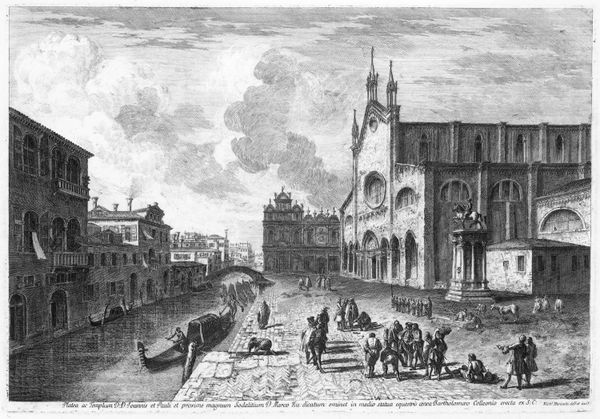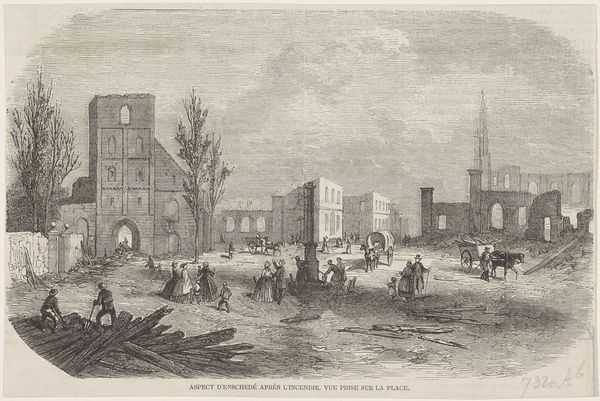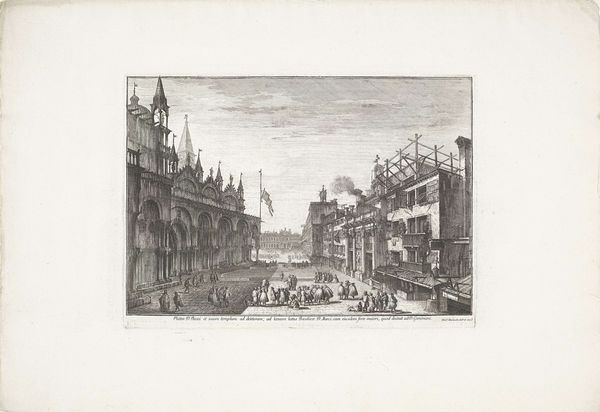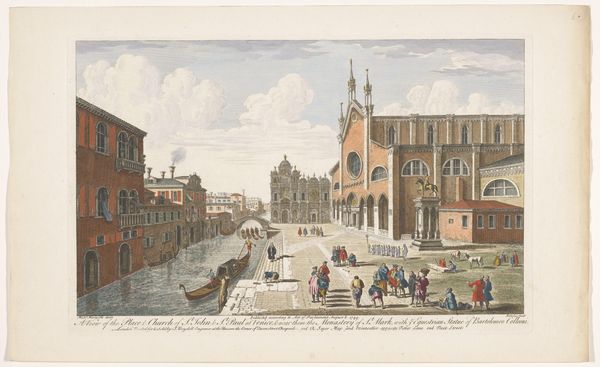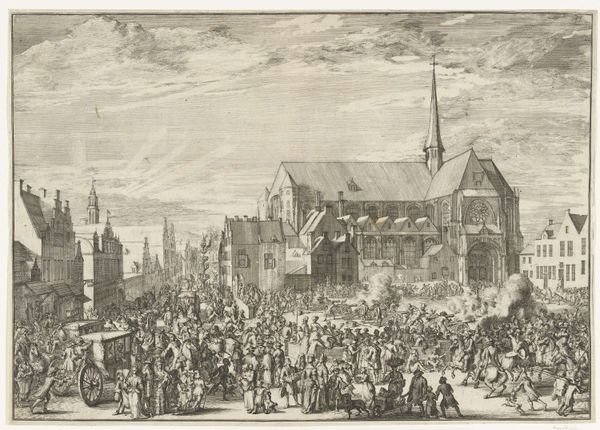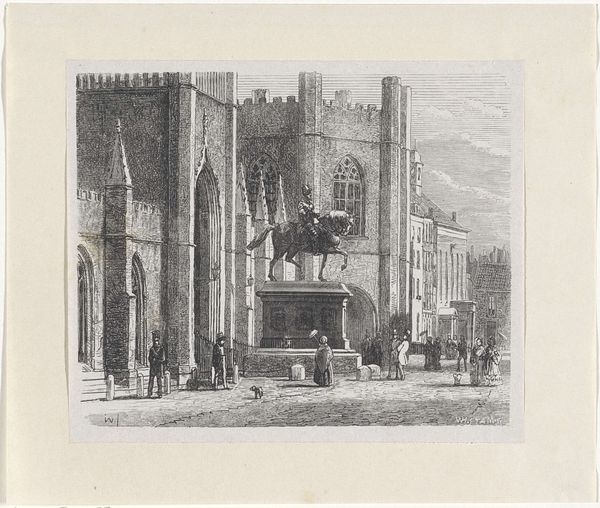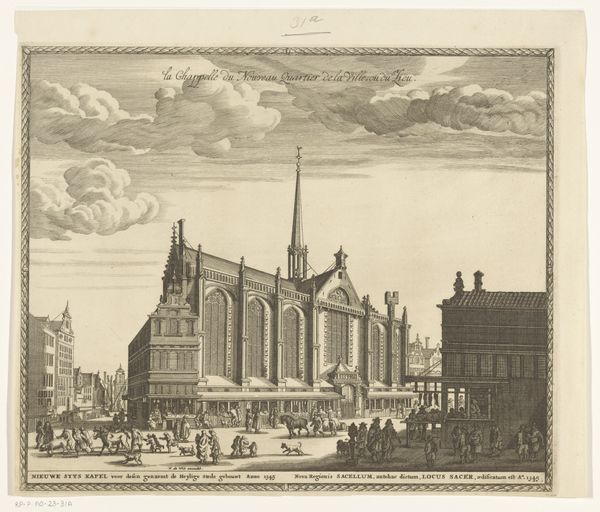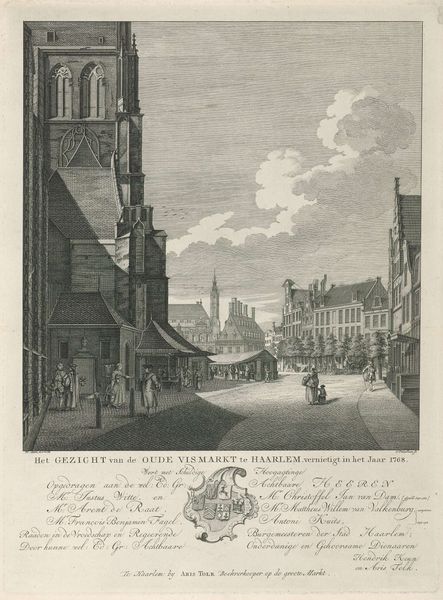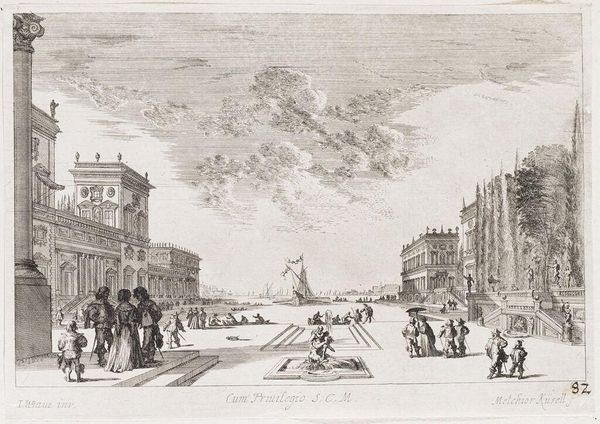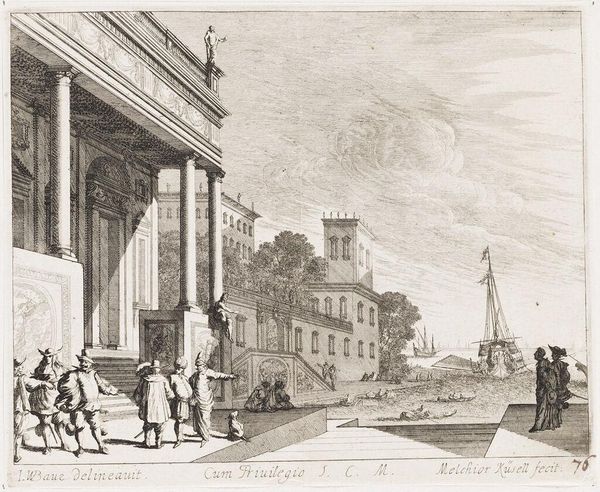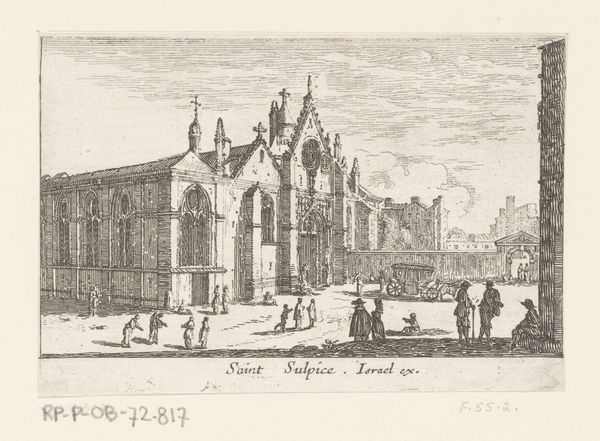
print, engraving
#
venetian-painting
#
baroque
# print
#
landscape
#
line
#
cityscape
#
engraving
Dimensions: height 311 mm, width 450 mm
Copyright: Rijks Museum: Open Domain
Curator: This is Michele Marieschi's "Campo Santi Giovanni e Paolo te Venetië," an engraving from 1741 now housed in the Rijksmuseum. Editor: My initial impression is one of bustling yet orderly life; the intricate lines bring to mind a stage where everyone performs their roles with remarkable synchronicity. Curator: Indeed, it encapsulates 18th-century Venetian life but let's delve into the deeper narrative at play. Marieschi captures the intersectionality of commerce, faith, and aristocratic power within this public square. How do you read the symbolic architecture? Editor: Well, the basilica obviously looms large, representing not only the spiritual heart of Venice, but it stands beside an equestrian statue. It implies secular, martial power sanctioned, or perhaps even overshadowed, by the Church. I also note the deliberate portrayal of daily activities. Are they types rather than individuals, perhaps? Curator: Exactly! This hints at the rigid class structures dictating access and representation in Venetian society. Note the marginalization of certain figures in the shadows. Are they intentionally depicted or made subservient by the composition? The choice to render this public space in such a meticulous manner shows how power is maintained through controlled visibility and limited avenues for dissent. Editor: And if you shift focus to the Grand Canal and those smaller structures along it—one senses the omnipresence and the power of Venice, so interwoven with every facet of life. It seems less accidental and much more central. Curator: A keen observation, showing Venice literally intertwined. Furthermore, who exactly benefits from such aesthetic projects? By visually celebrating the structures of power, artwork such as this normalizes existing inequities and may erase collective struggles. The very decision to create this highly structured print itself constitutes an ideological statement! Editor: But at the same time, these prints become part of Venice's self-fashioning as an entrepot for luxury and for a globalized vision. We have, then, a story far more complicated than surface appearances allow. Curator: A vital complexity which underscores that an engraving may not present mere reality but can function as both social critique and reinforcement of established orders. Thank you. Editor: My pleasure, uncovering the multiple layers reminds me to always question visual certainties in the arts.
Comments
No comments
Be the first to comment and join the conversation on the ultimate creative platform.
